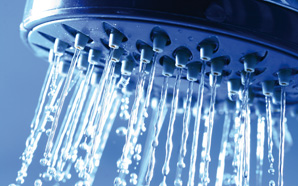

Isaac Occhipinti takes a look at how hot water storage plays a part in timely distribution
In the past few decades we have become the Impatient Nation. The demand to ‘have it now’ is seeping into every corner of our lives. We want quick answers to complex problems, we speed date, eat fast food, use self-checkout lines, try the “30-day Abs challenge”, pay extra for overnight shipping, beep when the traffic lights turn green, speak in half sentences, start things but don’t finish. We tweet stories in 140 characters or less. We cut corners, take shortcuts. We txt.
So, how do we meet the impatient hot water demands of today’s household? How do we ensure both bath and en-suite shower can run simultaneously, and the impatient nation can go about their day without having to . . .wait?
Meeting demand
Hot water storage tank solutions now allow for someone to take a hot shower while someone else runs a fast filling bath. No-one has to wait, making it a perfect solution for the hurried household.
Unvented units work directly from the mains water supply, which means that, providing the incoming mains pressure is sufficient (which in the vast majority of cases it is), hot water can be delivered quickly, via more than one outlet.
Many people remain under the impression that hot water storage tanks mean they will run out of hot water, and then have to wait for the tank to heat up again. If the tank is sized correctly according to the needs of the household, this shouldn’t happen.
How to size correctly
Obviously, larger houses will have larger tanks. When selecting the size of the hot water tank, a simple rule of thumb is that for a typical domestic household, you should allow between 35 and 45 litres for every occupant. That said, a mains pressure system can use about 18 litres/min at 40°c if a decent quality showerhead is used. Certain brands of shower can use up to 25 litres/min.
However, it must be noted that personal habits also play a big part in total hot water use. Two households of the same size can use completely different amounts of hot water, with one of them using twice as much as the other.
In determining how much hot water is required you should always consult with the occupants, and consider the following:
• A bath uses 100 litres of hot water at 40°c (equating to 60 litres at 60°c)
• Showers can use about 18 litres of hot water per minute at 40°c (equating to 11 litres at 60°c)
The following average consumption values can be used as a general rule (hot water requirements per person per day):
• Low consumption is between 20 and 30 litres
• Average consumption is between 30 and 50 litres
• High consumption is more than 50 to 70 litres
On this basis, a typical four-person household would often use around 200 litres of hot water a day and this is the figure that will generally be used under the new EU energy labelling scheme.
This does not necessarily mean that a 200 litre tank is required as, depending on the heating system, the tank may be partially reheated during the day. It is up to the installer to match the correct size of tank relative to the boiler (or electrical) input to avoid running out of hot water.
Future proofing
So, we have established that the hot water industry can meet the needs of today’s household, now let’s look at how they also meet the needs of tomorrow’s.
With renewable energy heating sources becoming more and more common, heat pumps, solar panels and biomass boilers are all technologies that we are becoming increasingly familiar with, and indeed the government is encouraging this with schemes like the Renewable Heat Incentive (RHI).
The latest figures for RHI show that from April to September 2014, 8,949 homes have applied for payments under the domestic RHI.
Renewable technology is here to stay, and there is one thing that cannot be emphasised enough – storage of some sort is essential to harvest these energy types, and hot water storage is the only practical solution to turning the energy produced into something useful, and banking it for when it needs to be used.
Hot water storage tanks are the perfect companion for renewable energy sources, which can be inflexible in terms of their energy supply. You are often at the hands of the weather when it comes to systems using solar thermal and air source heat pumps for example. Hot water tanks can heat the water when your renewable source is generating energy, store it, and then use it when needed.
The features of hot water storage tanks that are purposely designed for use with renewables allow maximum heat transfer of renewable energy into the stored water. Acting as the heart of an alternative energy system, there are tanks designed for use with one energy source available, as well as products that can take input from multiple heat sources; including solar panels, biomass, heat pumps and other heat sources.
In addition, there are now also products available which come pre-wired and pre-plumbed to save on installation time, taking on the technology industry’s phrase of ‘Plug and Play’.
Products with single coils for use with one heat source, and twin coils for dual heat sources, or plate-to-plate heat exchangers, are also available.
Hot water storage tanks are an efficient and environmentally friendly way of providing domestic hot water and cutting energy bills. They are also more than capable of meeting the demands of today’s impatient households.
Isaac Occhipinti is external affairs manager for the HWA
If you'd like to keep up-to-date with the latest developments in the heating and plumbing industry, why not subscribe to our weekly newsletters? Just click the button below and you can ensure all the latest industry news and new product information lands in your inbox every week.